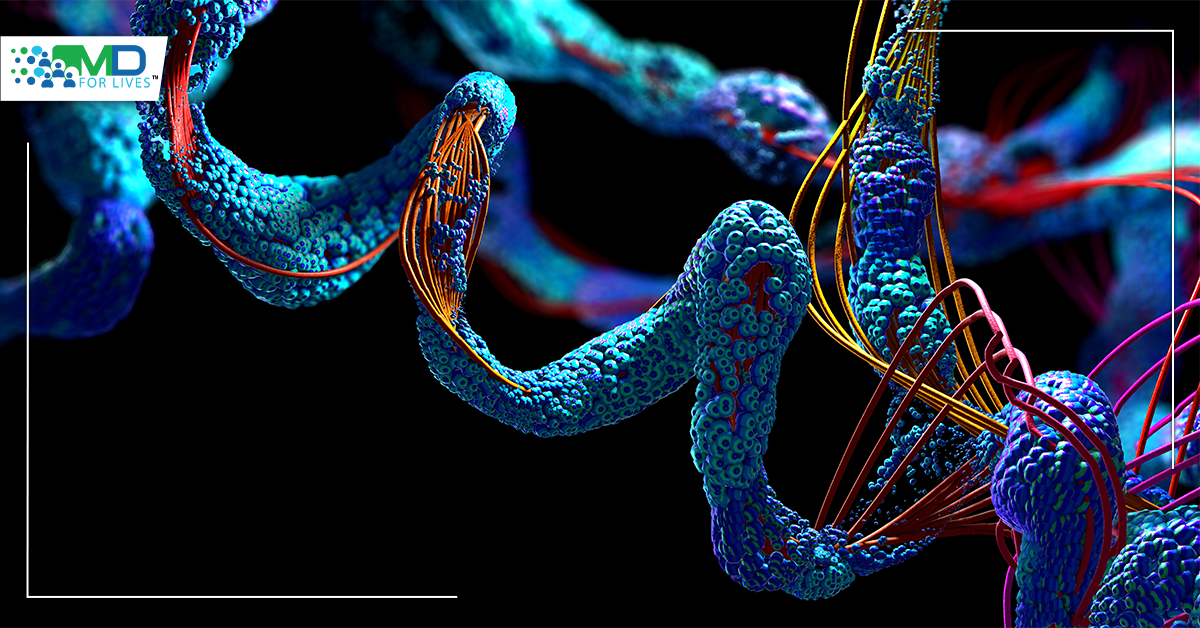Pancreatic cancer is one of the leading causes of cancer-related death. Despite advanced treatment regimens, the 5-year survival rate of pancreatic cancer is still below 10%.1 As it largely remains asymptomatic and increasingly diagnosed at a late stage, pancreatic cancer has a very poor prognosis.
Now, researchers have discovered a diagnostic biomarker for the early detection of pancreatic cancer. Pentraxin (PTX3), the biomarker may also be useful to differentiate pancreatic cancer from other noncancerous conditions of the pancreas. The new study was published in npj Precision Oncology.2
Epidemiological Review of Pancreatic Cancer
According to GLOBACON 2020, pancreatic cancer is the 7th leading cause of cancer death, and deaths (466,000) are almost the same as cases (496,000).3 The risk factors include obesity, diabetes, heavy alcohol consumption, increasing age, family history, etc. Dietary factors, gastrointestinal and gall bladder conditions, and certain medications are also associated with increased risk of pancreatic cancer.
According to data from the National Cancer Institute, the Surveillance, Epidemiology, and End Results Program (SEER, 2021), approximately 60,430 new pancreatic cancer cases and 48,220 pancreatic cancer deaths are projected to occur in the United States in 2021.4
The incidence and mortality rate displays the rising prevalence of obesity, alcohol use, and diabetes. These trends may continue to increase in the near future and are expected to surpass breast cancer by 2025 and become the third leading cause of cancer-related death in European countries.3
PTX3, a Diagnostic Marker for Pancreatic Cancer
Biomarkers that predict recurrence, prognosis or response to cancer therapy can aid individualized treatment options. A new study led by researchers at Queen Mary University has discovered a diagnostic biomarker that can differentiate pancreatic cancer from non-cancerous pancreatic conditions.2
PTX3, the member of the pentraxin family can be a marker of cancer-related inflammation and may play a role in tumor cell proliferation, migration, and invasion.5 Circulating levels of PTX3 are found to be elevated in several cancers including pancreatic cancer.5
Previous studies have exhibited the association of high serum PTX3 levels with advanced pancreatic cancer and poor overall survival and provided evidence for the clinical usefulness of PTX3 as a prognostic factor of pancreatic cancer6,7.
In this study,2 researchers analyzed blood samples of 267 participants including 140 patients with pancreatic ductal adenocarcinoma (PDAC) along with non-neoplastic pancreaticobiliary disease (n=105) and healthy controls (n=22). Using ELISA, they measured the serum PTX3 levels of the participants. Patients with PDAC showed significantly higher levels of PTX3 in the serum as compared with controls. Furthermore, the results showed markedly elevated levels of serum PTX3 in patients with PDAC when compared with an intraductal papillary mucinous neoplasm (IPMN) or chronic pancreatitis- the conditions with similar clinical presentations of PDAC. Thus, serum PTX3 acts as a diagnostic biomarker for PDAC, differentiating it from other pancreatic conditions.
PTX3 Released from Non-Cancerous Cells
The main feature of PDAC is the dense desmoplastic stroma, it accounts for more than 70% of the tumor volume.8 The dense stroma consists of several components including pancreatic stellate cells.
In general, cancer biomarkers are released from cancerous cells; however, PTX3, the biomarker of pancreatic cancer is released by the non-cancerous stellate cells. Pancreatic stellate cells support tumorigenesis, protect cancer cells, and play a major role in cancer invasion and progression5.
By using immunohistochemistry, researchers confirmed that the PTX3 is predominately expressed and secreted by pancreatic stellate cells. Stellate cells produce PTX3 only when they are activated, they are activated in the process of tumorigenesis.9
Researchers further analyzed the data from clinical trials. The SCALOP clinical trial, where stroma was not targeted showed no difference in serum PTX3 levels. However, in STARPAC clinical trial, all-trans-retinoic acid (ATRA) targeting stroma was administered along with standard chemotherapy. The result showed immediate PTX3 response soon after the first dose of ATRA suggesting PTX3 could be used to monitor response to stroma-targeting therapy in PDAC.
Summary
Although the gold standard imaging CT scan can detect PDAC, they fail to distinguish between benign and malignant growth. The findings provide evidence that serum PTX3 can differentiate pancreatic cancer from other pancreatic conditions such as IPMN and chronic pancreatitis, indicating that PTX3 may be a sensitive and specific diagnostic biomarker for PDAC. The study also revealed that activated pancreatic stellate cells, the non-cancerous cells secrete PTX3. In addition, the researchers also suggest that PTX3 may help to monitor the effect of the stromal modulating treatment, further studies are needed to confirm it.
The findings indicate that PTX3 has great potential as a biomarker for the early detection of pancreatic cancer and can also be used to monitor treatment response.

References
- https://www.ncbi.nlm.nih.gov/pmc/articles/PMC6396775/
- https://www.nature.com/articles/s41698-021-00192-1#Sec2
- https://acsjournals.onlinelibrary.wiley.com/doi/pdf/10.3322/caac.21660
- https://seer.cancer.gov/statfacts/html/pancreas.html
- https://www.frontiersin.org/articles/10.3389/fimmu.2019.00712/full#B129
- https://www.nature.com/articles/bjc2013348#Abs1
- https://www.nature.com/articles/bjc2013348#Sec15
- https://www.frontiersin.org/articles/10.3389/fonc.2020.576399/full
- https://www.ncbi.nlm.nih.gov/pmc/articles/PMC7033654/






